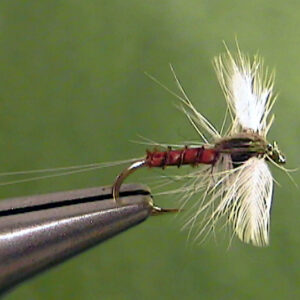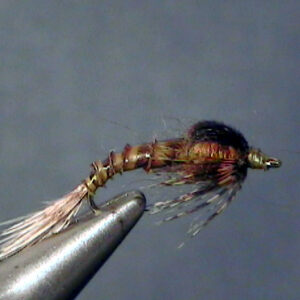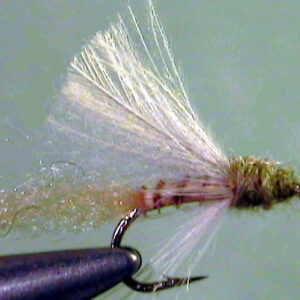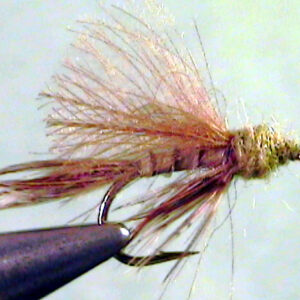Hook Size: 14/16
The Perfect Fly Small Western Green Drake Dun is an excellent imitation of the adult stage of life of the mayfly. It imitates the mayfly as it drifts or floats on the surface, drying it’s wet wings enough to fly off the water onto the banks, bushes or trees where it will eventually change into the spinner stage of life. It even imitates the dun down to two or three tails and it two upright wings. It is fished on the surface as a dry fly. It should be treated with floatant.
The Small Western Green Drake nymphs called “Flav” nymphs, accent from the bottom
to the surface of the water and split their shucks open for the duns to emerge in the
surface skim. The duns only stay on the surface for a very short time and then they
quickly depart the water. The warmer the weather, the quicker they depart the water. This
only takes a few seconds in most cases.
Although the trout will take emerger imitations of the Small Western Green Drakes very
well, usually better than the duns, most anglers prefer to fish a dun pattern. That’s
because the flies imitating the duns are easier to see on the water than the emergers.
The emergers float flush with the surface rather than on top of the surface. We think the
emergers actually get more action from the trout than the dun but the duns are more fun
to fish. The trout have far more time to eat them and they are aware of the fact they don’t
escape as fast.
Presentation:
You want to present the “Perfect Fly” Flav Dun in an up and across manner in pocket
water. As mentioned in the emerger section, the Small Western Green Drake duns
emerge in the slower moving water adjacent to their normal moderate to moderately fast
water habitat. They quickly get caught up in the current seams and channeled
downstream.
If you are fishing pocket water streams, short, upstream presentations will cover more
water and likely lies in the current seams at the edges of the rough water than a
downstream presentations. The short presentations will also help you control drag by
keeping most of your fly line off the water.
If you are fishing smooth flowing water, a downstream, or a down and across presentation
usually works best. Because the trout will be facing you, downstream presentations will
require longer cast to keep from spooking the trout. Presented properly, the downstream
cast allows the trout to see the fly before seeing your tippet, leader or fly line. In smooth
water, this can make a big difference.
In some cases, it is best to single out one fish rather than trying to cover a larger area of
water. It requires a more technical type of presentation, but done correctly, it can result in
a higher degree of success.
Copyright 2013 James Marsh




